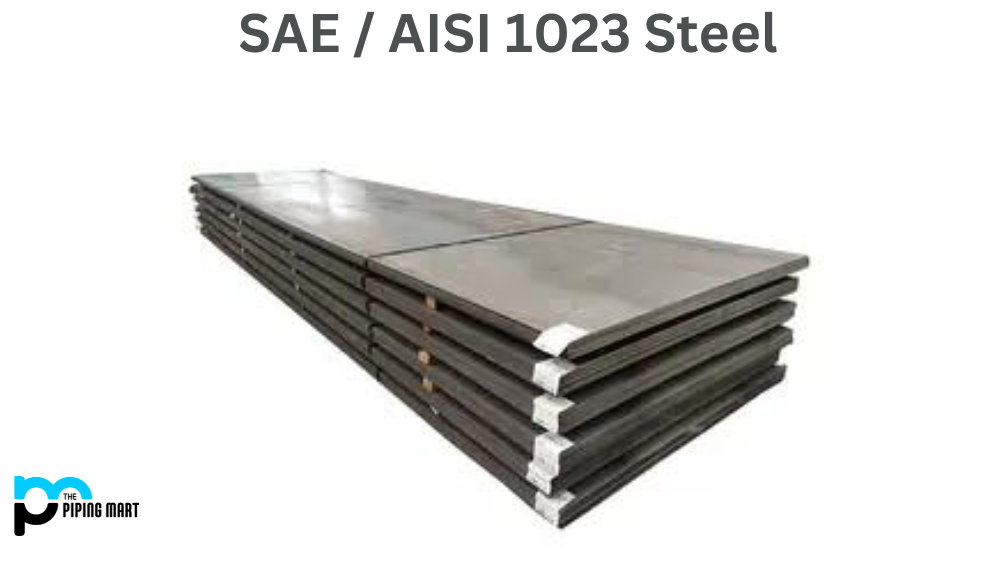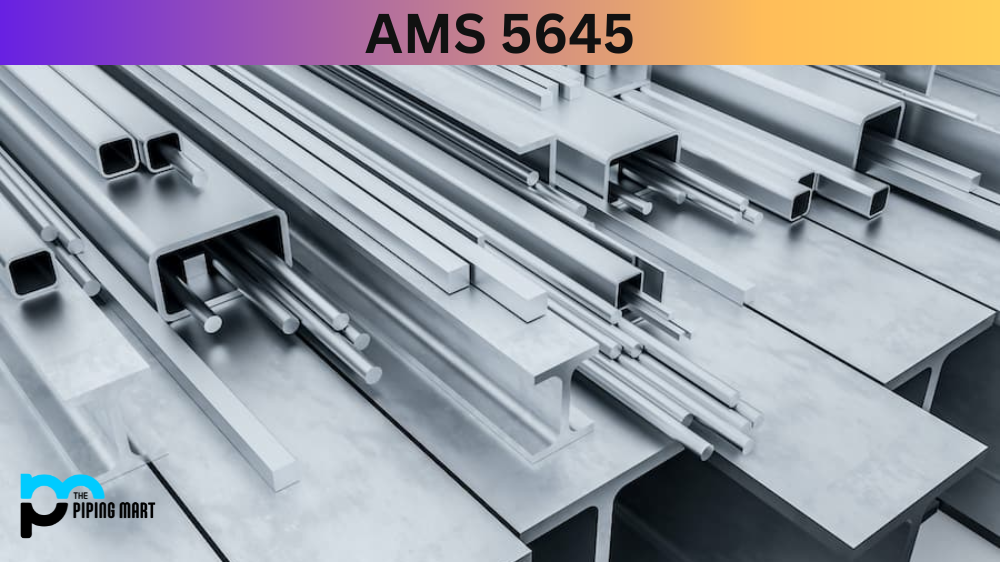SAE / AISI 1023 steel is a type of low-carbon alloy steel specifically designed for use in applications that require excellent machinability and formability. It is often used in the manufacture of automotive components, such as engine blocks, transmission parts, and wheel hubs. SAE/AISI 1023 Carbon Steel, also known as UNS G10230, might seem complex, but understanding its properties and composition can be fascinating. This type of steel offers exceptional weldability and machinability, making it an ideal choice for various applications. Its composition consists of iron, carbon, and manganese, with trace amounts of silicon and copper, resulting in a high strength-to-weight ratio and impressive wear resistance. Whether used in construction, machinery, or automotive industries, SAE/AISI 1023, Carbon Steel is a reliable and versatile material that should not be underestimated.In this post, we’ll look at the composition and properties of SAE / AISI 1023 steel and how it can be used in various industries.
What Forms of AISI 1023 is Available at Piping Mart?
- Nut
- Bar
- Bolt
- Pipe
- Screw
- Tubing
- Valves
- Washers
- Flanges
- Fasteners
- Electrodes
- Stud Bolts
- Sheet Plates
- Pipe Fittings
- Forged Fitting
- Instrumentation Fittings
AISI 1023 Composition
SAE / AISI 1023 is a low-carbon steel composed of carbon (C), manganese (Mn), phosphorus (P), sulfur (S), and silicon (Si). The chemical composition of SAE / AISI 1023 is as follows: C 0.17-0.22%, Mn 0.60-0.90%, P ≤ 0.04%, S ≤ 0.05%, Si ≤ 0.25%.
| Element | Content (%) |
|---|---|
| Iron, Fe | 99.06-99.51 |
| Manganese. Mn | 0.30-0.60 |
| Carbon, C | 0.19-0.25 |
| Sulfur, S | ≤ 0.050 |
| Phosphorous, P | ≤ 0.040 |
AISI 1023 Chemical Properties
This alloy has excellent machinability, formability, and weldability properties due to its low carbon content; however, it does not have good corrosion resistance or heat resistance.
AISI 1023 Mechanical Properties
The mechanical properties of SAE / AISI 1023 steel include tensile strength of 79 ksi (545 MPa) minimum; yield strength of 36 ksi (250 MPa) minimum; elongation in 2 inches (50 mm) or 4D min 15%; reduction of area min 45%; Brinell hardness max 151 HBW; Charpy V-notch impact test results must meet a minimum value at -20°F (-29°C).
| Mechanical Properties | Metric | Imperial |
|---|---|---|
| Tensile strength | 425 MPa | 61600 psi |
| Yield strength | 360 MPa | 52200 psi |
| Shear modulus | 80.0 GPa | 11600 ksi |
| Bulk modulus | 140 GPa | 20300 ksi |
| Elastic modulus | 190-210 GPa | 27557-30458 ksi |
| Poisson’s ratio | 0.27-0.30 | 0.27-0.30 |
| Elongation at break | 15% | 15% |
| Reduction of area | 40% | 40% |
| Hardness Brinell | 121 | 121 |
| Hardness, Knoop | 140 | 140 |
| Hardness, Rockwell B | 68 | 68 |
| Hardness, Vickers | 126 | 126 |
| Machinability | 65 | 65 |
AISI 1023 Physical Properties
The physical properties include density 7.85 g/cc; modulus of elasticity 29 × 106 psi (200 GPa); thermal expansion coefficient 7×10−6/K; thermal conductivity 11 W/m K; electrical resistivity 28 μ Ω•cm at 20°C; specific heat capacity 0.49 J/g K at 25°C.
| Properties | Metric | Imperial |
|---|---|---|
| Density | 7.858 g/cm3 | 0.2839 lb/in³ |
AISI 1023 Thermal Properties
| Thermal Properties | Metric | Imperial |
|---|---|---|
| Thermal conductivity | 51.9 W/mK | 360 BTU in/hr.ft².°F |
AISI 1023 Equivalents
- ASTM A29
- ASTM A510
- ASTM A575
- ASTM A576
- ASTM A659
- SAE J403
- SAE J412
- SAE J414
AISI 1023 Uses
Due to its excellent machinability and formability properties, SAE / AISI 1023 steel is widely used in the manufacture of automotive components such as engine blocks, transmission parts, wheel hubs, etc., as well as in other industries such as construction machinery and agricultural equipment components where strength is not required but good formability is essential.
AISI 1023 Uses in Industries
Automotive Industry
AISI 1023 steel is commonly used in the automotive industry for various applications such as gears, shafts, and axles. This type of steel’s high strength and wear resistance make it ideal for use in heavy-duty components that are subject to constant stress and friction.
Construction Industry
In the construction industry, AISI 1023 steel is often used to produce structural components such as beams, columns, and joists. Its high strength-to-weight ratio makes it a popular choice for building structures that withstand heavy loads while remaining lightweight.
Aerospace Industry
The aerospace industry also relies on AISI 1023 steel for its high strength and durability. This type of steel is commonly used to produce aircraft parts such as landing gear, engine components, and structural frames.
Oil and Gas Industry
In the oil and gas industry, AISI 1023 steel is utilized for its corrosion resistance properties. It is often used in pipelines, storage tanks, and other equipment that comes into contact with harsh chemicals or environments. Additionally, its high tensile strength makes it suitable for use in drilling equipment that needs to withstand extreme pressure and stress.
AISI 1023 Corrosion Resistance
However, due to its lower corrosion resistance compared to other steels like stainless steel or aluminum alloys, it should not be used in corrosive environments without proper protection such as coatings or galvanizing processes applied on its surface prior to use.
AISI 1023 Heat Resistance & Heat Treatment
SAE / AISI 1023 has poor heat resistance compared to other steels due to its low carbon content; therefore it should not be used for applications requiring high temperature operation unless proper heat treatments are applied beforehand such as tempering or annealing processes performed after welding or forming operations are completed on the material before use in order to improve its heat resistance characteristics significantly up to temperatures ranging from 1200°F – 1400°F depending on the application requirements..
AISI 1023 Machining
Due to its low carbon content and excellent machinability characteristics, UNS G10230 can be easily machined using conventional machine tools with no modifications on either the tooling setup or the material itself during machining operations like drilling or turning operations provided that adequate coolants are used throughout these procedures.
AISI 1023 Welding
Regarding welding processes, this material can be welded using conventional welding techniques with no preheating treatment necessary prior to welding operations, although post welding treatments like annealing might be needed if specified by the application requirements.
Conclusion
In conclusion we can say that SAE/AISI 1030 is a versatile low-carbon alloy steel ideal for applications requiring excellent machinability and good formability while offering moderate levels of strength combined with acceptable levels of corrosion resistance when correctly protected from external elements through suitable coatings or galvanizing processes applied on its surface prior to use . Its relatively low cost also makes it attractive for many industries where cost efficiency is important combined with good performance characteristics making this type of steel ideal for many different types of applications depending on their requirements . Finally , since this material features good weldability thanks to its low carbon content, further improving these characteristics through proper post-welding treatments could make it suitable even for more demanding applications if desired.

Meet Bhavesh, a seasoned blogger with a wealth of knowledge and experience. From metal products manufacturing to retail, Bhavesh has a diverse background in various industries and is dedicated to sharing his insights and expertise with readers.




